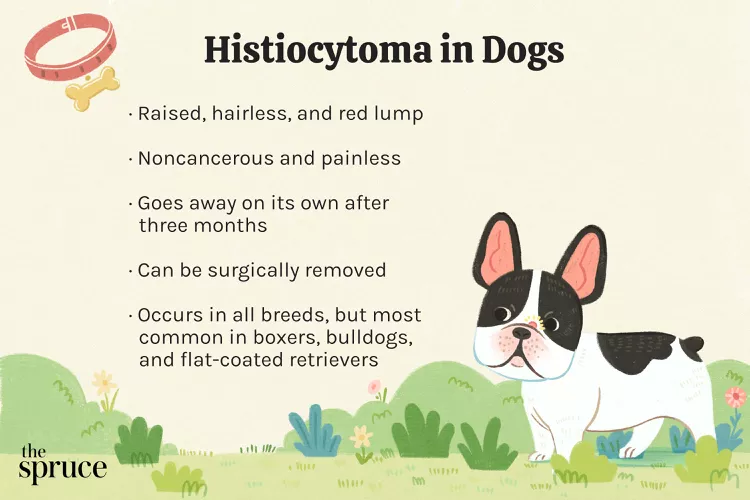
Acetaminophen, or Tylenol, is a common over-the-counter medication used by humans to relieve pain and fever. You may be tempted to give your dog acetaminophen for pain since it's available over the counter. However, this drug can be toxic to dogs.
You should never give your dog acetaminophen. If you suspect your dog needs pain relief or has a fever, seek veterinary care for your dog.
Acetaminophen is a nonprescription medication that relieves mild to moderate pain and reduces fever. It is an anti-inflammatory that also has analgesic properties to reduce pain and lower fevers. The drug has been a popular, effective pain reliever and fever reducer for human use since the 1950s.
Acetaminophen is not available in veterinary preparations and is not a recommended form of pain relief in dogs.
Acetaminophen can be highly toxic to dogs.
If your dog is in pain, your vet will prescribe a more effective, safer drug than acetaminophen. There are many veterinary pain medications to choose from that can help your pet depending on its specific needs. It is important to get your dog to the vet right away if it is in pain as this can be a symptom of many problems, and a pain reliever may mask these signs without helping to treat the underlying condition.
Never give ibuprofen (Advil) or naproxen (Aleve) to dogs as these are highly toxic. Always consult with your vet before giving your dog any medication, supplement, or herbal remedy.
There may be rare cases where your veterinarian recommends giving a pain reliever containing a low dose of acetaminophen to your dog. This is only done in very unique cases and is based on the specific health and condition of your dog. If so, you must follow your vet's recommendation for dosage and administration.
Acetaminophen is never safe for cats and is highly toxic to them.
Dogs receiving safe, low doses of acetaminophen may still experience adverse effects, such as gastrointestinal upset, liver and/or kidney issues, blood-related problems, or dry eye. The risk of potentially serious side effects makes it a poor choice for pain management in dogs, especially because there are many safe medications that can be used instead.
Acetaminophen is generally considered toxic to dogs at doses above 30 to 50 milligrams per kilogram (13 to 22 milligrams per pound). However, some dogs are more sensitive and will experience toxic effects at lower doses. In addition, frequent ingestion of acetaminophen may make dogs more susceptible to toxicity.
Acetaminophen toxicity causes damage to the liver and red blood cells. It may damage the kidneys as well. This damage creates many serious complications in the body and may lead to death.
Signs of acetaminophen toxicity typically appear around one to four hours after ingestion and tend to get gradually worse if untreated.
If you know that your dog ingested a toxic amount of acetaminophen, then you should contact your veterinarian immediately. Your vet may recommend that you induce vomiting at home or bring your dog in for them to induce vomiting under veterinary supervision. Don't try to induce vomiting at home unless your veterinarian recommends it and provides detailed instructions.
If it's been 30 minutes or more since your dog ate acetaminophen, then vomiting is unlikely to be enough. Your dog will need veterinary treatment for acetaminophen toxicity. The vet may need to give your dog activated charcoal to try to decontaminate toxins from the GI tract. A drug called N-acetylcysteine is another common treatment used to protect red blood cells and the liver from further injury. Intravenous fluids and additional medications may be necessary for supportive care. In serious cases, your vet may recommend a referral to a veterinary specialty center for more intensive care.
The prognosis of acetaminophen toxicity in dogs varies from case to case and depends on the amount of drug ingested and any underlying conditions the dog may have. As is the case with most toxins, the sooner the dog is treated, the better the chance of recovery. The best way to prevent accidental ingestion is to keep medications safely locked up and out of reach.

Cute Pictures & Facts About Calico Cats & Kittens
Learn fascinating facts about calico cats, including photos, the genetics behind this color combination, and common folklore and traditions.
How to Prevent Cat Separation Anxiety During Vacations
Discover why cats develop litter box problems and cat behavior problems when you go on vacation and what you can do about it to help them.
Cat Behavior Changes That Might Mean Something's Wrong
Cats' behavioral changes may indicate problems—or they may mean nothing at all. Explore causes of odd behavior and what to do about them.
Lhasa Apso: Dog Breed Characteristics & Care
The Lhasa apso is an ancient breed from Tibet that was bred to be a watchdog. Learn about its history, health, exercise needs, and more.
Reasons Why Dogs Run Away and How to Stop It
Dogs can escape, especially if they’re bored and not properly contained. Here are some techniques for stopping your dog from running away.
Can Dogs Get Depression? How to Help Your Sad Dog
Can dogs get depression? Learn about the signs of depression in dogs and find out how to help your sad dog.
How to Stop Aggression in Dogs
Dog aggression can be a serious behavior issue for pet owners. Learn how to stop aggression in dogs before someone gets hurt.
How to Stop Your Dog From Growling
A growling dog can soon become even more aggressive. Reduce the noise and potential for a dangerous situation with some of these techniques.
Why Do Dogs Dig Holes? How to Stop Your Dog from Relandscaping Your Yard
Dogs have been digging holes for centuries and for many reasons. Whether they’re bored or want to cool off in the dirt, here are the top reasons why dogs dig holes.
Dog Treat Varieties
Learn about the different types of dog treats on the market and decide which are best for your dog.
Can Dogs Eat Asparagus?
Dogs can eat asparagus, provided the vegetable is cooked plain and cut up for them. Seasonings, salt, and butter make it unhealthy for dogs.
Histiocytomas in Dogs
A histiocytoma is a type of benign (non-cancerous) skin lump that usually affects young dogs. Learn the causes, treatment, and prevention.
Why Is My Dog’s Eye Swollen?
If your dog's eye is swollen, she may need veterinary attention. The inflammation could be caused by allergies, an injury, or even a tumor.
Common Bugs and Parasites Found on and Inside Dogs
Learn about common types of parasites in dogs. Find out how to treat and prevent parasites to keep your dog, your family, and yourself safe.
Exploring the Different Types of Pet-Friendly Beaches
Are you looking for pet-friendly beaches? Learn about the different types of pet-friendly beaches, their locations, and tips for visiting them with your pet.
10 Obscure, Little-known Canine Facts in Honor of National Dog Day
With National Dog Day upon us, it's time to celebrate everything about our favorite pets—even the weirder stuff. Here are 10 obscure facts about dogs you probably didn't know.
Kitten Development From 3 to 6 Months Old
Kittens grow and change a lot during their first year. Find out what happens between the ages of three months and six months old.
95 Siamese Cat Names
Our list of Siamese cat names has diverse and fun options to help you choose the ideal moniker for your elegant and lovable feline companion.
What to Buy for Your New Cat: A List of Essentials
Before you bring your new cat or kitten home, there are a number of things to collect or buy so your cat will feel welcomed like a family member.
The 6 Best Cat Nail Clippers of 2024 for a Safe Trim
Clipping your cat's nails can save your furniture and keep your kitty comfortable. We asked veterinarians for their cat nail clipper recommendations.